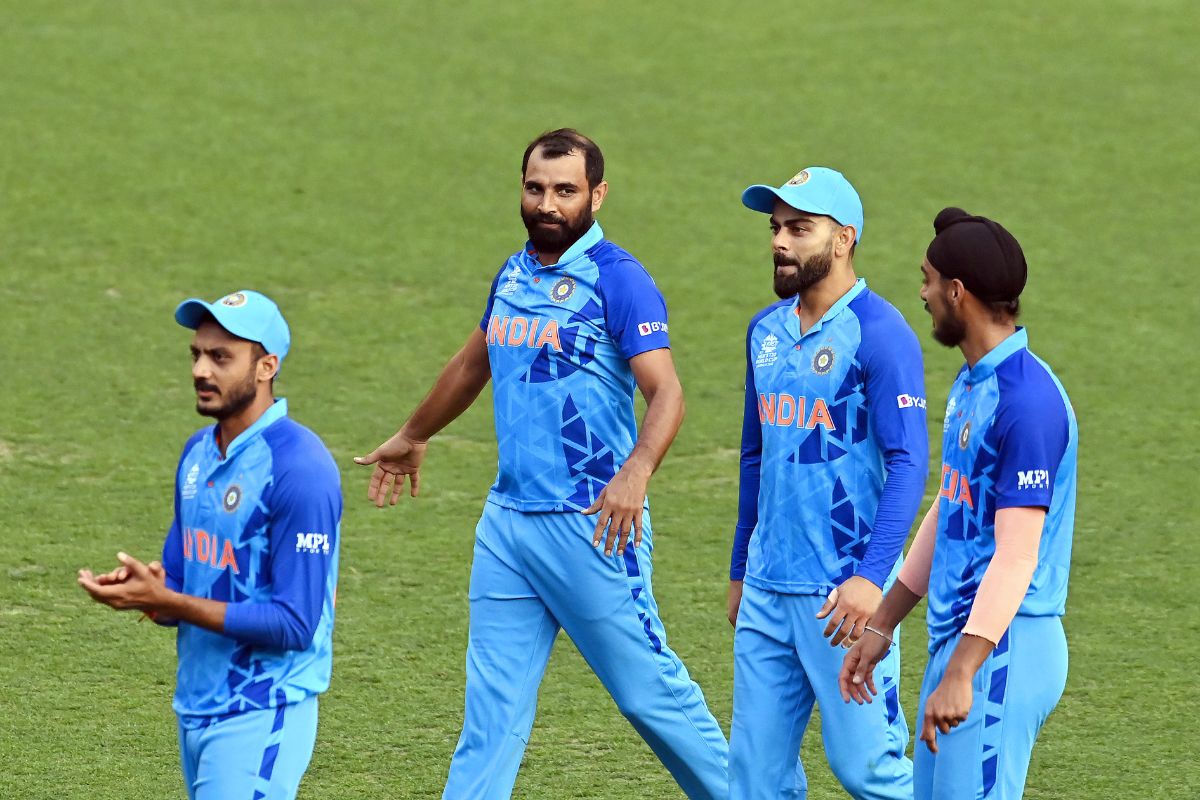It has been learnt that neither the Indian team management nor the Board of Control for Cricket in India is going to respond to the alleged “fake throw’ incident involving Virat Kohli against Bangladesh on November 2 at the Adelaide Oval in the ICC Men’s T20 World Cup.
The reason is that the two on-field umpires Marais Erasmus and Chris Brown have had no issues about the incident, it is understood.
Advertisement
The on-field happening became the talking point when Bangladesh wicket-keeper Nurul Hassan told the media in the mixed zone in Bengali after the match that Bangladesh deserved to get five penalty runs as Kohli play-acted as if he was relaying the ball thrown by Arshdeep Singh from the deep to wicket keeper Dinesh Karthik even as the ball went past the area where he was stationed on the field and he didn’t collect it.
“The wet outfield did have an impact when we restarted the game (after a 45-minute rain interruption). But there was also a fake throw which could have got us five runs but we didn’t get even that,” Hassan told media persons in the mixed zone after the game which his team lost by five runs under the Duckworth Lewis Stern method for rain-interrupted matches.
As per the Laws of Cricket, 2019 Code, Law 45 dealing with “Deliberate distraction, deception or obstruction of batter”, says, “In addition to Law 41.4 (Deliberate attempt to distract the striker) it is unfair for any fielder wilfully to attempt, by word or action, to distract, deceive or obstruct either batter after the striker has received the ball. (Law 41.5.1)
“It is for either one of the umpires to decide whether any distraction, deception or obstruction is wilful or not.” (Law 41.5.2).
“If either umpire considers that a fielder has caused or attempted to cause such a distraction, deception or obstruction, he/she shall immediately call and signal Dead ball and inform the other umpire of the reason for the call.” (Law 41.5.3).
“Neither batter shall be dismissed from that delivery.” (Law 41.5.4)
“If an obstruction involves physical contact, the umpires together shall decide whether or not an offence under Law 42 (Players’ conduct) has been committed.” (Law 41.5.5)
“If an offence under Law 42 (Players’ conduct) has been committed, they shall apply the relevant procedures in Law 42 and shall also apply each of 41.5.7 to 41.5.9.” (Law 41.5.5.1).
“If they consider that there has been no offence under Law 42 (Players’ conduct), they shall apply each of 41.5.6 to 41.5.10 (Law 41.5.5.2).
The relevant Laws 41.5.6 to 9 say: The bowler’s end umpire shall Signal No ball or Wide to the scorers, if applicable, award 5 Penalty runs to the batting side, inform the captain of the fielding side of the reason for this action and as soon as practicable inform the captain of the batting side. The ball shall not count as one of the over. Any runs completed by the batters before the offence shall be scored, together with any runs for penalties awarded to either side.
Additionally, the run in progress shall be scored whether or not the batters had already crossed at the instant of the offence. The batters at the wicket shall decide which of them is to face the next delivery.
Law 41.5.10 says:The umpires together shall report the occurrence as soon as possible after the match to the Executive of the offending side and to any Governing Body responsible for the match, who shall take such action as is considered appropriate against the captain, any other individuals concerned and, if appropriate, the team.
Thus far the International Cricket Council has not come out with a statement about the controversy.
















